If you only ever do one exercise for the rest of your life, it should be the push-up.
Some people hate them, some people love them. But there is no doubt in how beneficial the push can be when performed properly. It’s the Ultimate Primal Exercise and uses natural body movements to strengthen your entire body. Push-ups are one of the oldest and most widely-known exercises in the fitness world, and for good reason.
Can you spare 10 minutes a day? Then you can do this 7-Day Paleo Weight Loss Bodyweight Workout Challenge!
Click here to get your FREE copy!
A push-up not only will strengthen and sculpt your chest, but also works your biceps and triceps. Each one engages your abdominals and back as well as your glutes and trunk. The body weight movements in a push-up work the stabilizing muscles through your shoulder girdle, and help prevent injury. Without a doubt, this exercise is the total body workout.
However, for some, a standard push-up still may be too challenging. Other, more advanced exercisers may be bored with the standard fare. So today, we are going over 10 different push-up variations that will help you reach your goals.
Modified Push-up
This is the perfect variation for those just starting their exercise programs.This push-up is performed on your knees so that you can build up strength in your core and your arms before progressing.
To find the right position, start in a full plank on your hands, with your hands directly under your shoulders and a straight line from head to feet. Without changing your position at all, just lower your knees to the mat, continuing to keep the straight line from your head to your knees (make sure you are not directly on your knee caps). Engage your abdominals and lower down, bending the elbows. Focus on pressing through your knuckles to push-up to prevent discomfort in your wrists. This modification can be performed with a wide hand position or a narrow hand position (see below).
Wide Push-up
Having a wide hand position will allow you to focus on your chest muscles and front shoulder muscles. This variation tends to be a bit easier than the narrow position, because you have a wider base to work through.
For this variation, set your hands up a bit wider than shoulder-width apart. Lift into a full plank position, engage your abs and lower into a push-up. Your elbows should be bent at about a 90-degree angle, with your elbows out to the side, at the bottom of your push-up. Your hands should be in line with your shoulders (many people tend to have their hands more in line with their nose, so be mindful of that).
Narrow/Tricep Push-up
This push-up variation is a bit harder than the wide position, because your triceps are the focus muscle in this exercise, and your triceps are smaller muscles than your chest.
Start in a plank position with your hands directly under your shoulders. As you lower into your push-up, make sure the elbows stay close in by your sides, and point back. At the top of the push-up you will feel your triceps engaged.
Single Leg Push-up
To start progressing your push-ups, a simple variation is to lift one leg while performing your set. This will make your base smaller at your feet, challenging your stability and requiring more core engagement. This variation can be done with a wide or narrow hand position.
Starting in your plank position, engage your abs and specifically your obliques, squeeze your glutes and raise one leg up off the ground, It doesn’t have to be too high, just focus on squeezing your glutes and not shifting your weight too much to the side. Perform your set of push-ups with the leg lifted the entire set. On your next set, raise the opposite leg to work both sides evenly.
Spiderman Push-up
This progresses the single leg push-up even further. The Spiderman push-up engages your obliques and helps strengthen your core. It will also get your heart pumping more with its extra body movements.
With either a wide or narrow hand position, start in a plank with both feet on the ground. As you lower to the bottom of the push-up bring your RIGHT need out to the side to reach for your RIGHT elbow (it doesn’t have to touch). As you push back up, extend the leg back and place the foot back on the floor. On the next push-up repeat using the LEFT side.
T-Rotation Push-up
This is a great way to work on shoulder stability and strength. At the top of the position you will balance for a second in a full side plank position, working the shoulder girdle as well as opening the chest to work on mobility through the shoulders.
Start by performing a wide or narrow push-up, and as you press up, lift your RIGHT hand off the ground to rotate to the side into a side plank on your left hand. Rotate back to the floor into another push-up. This time as you come up, alternate to lift the LEFT hand off the ground.
Incline Push-up
This is great for beginners as well as for those who want to start progressing to some of the other push-up variations listed above. For example, you could work on a single leg push-up in the incline position, if performing it on the ground is too challenging at first. The incline position will also work your chest in a slightly different way. It works the pectoralis major, which is the large part of your chest muscles.
Place your hands on a chair or a bench in a wide or narrow position. Adjust your body into a plank position, making sure to keep your hands in line with your shoulders. Perform your push-up and be sure you don’t lift your hips up or shift your weight backwards. Keep the abs engaged and focus on working the arms.
Decline Push-up
These are significantly harder than the incline push-ups and are a progression for regular wide or narrow push-ups. Not only will your upper body be carrying more weight from this position, but the movement also focuses on the upper part of your chest, which is generally weaker, as well as the shoulders. The higher your feet are elevated, the more you will focus on these muscles, and the more challenging the exercise will become.
Carefully place your feet on a chair or a bench as you place your hands on the floor in a plank position. Your hands should be directly in line with your shoulders (once again, not with your face) and perform a push-up. Start with a smaller decline and work your way to a higher level, once you’re ready.
Pike/Handstand Push-up
This starts taking the decline push-up to another level. This one will focus primarily on the shoulders and can be performed in a pike position (shown), with feet elevated in a pike position (similar to a decline push-up), or in a handstand with your feet against a wall for support. If you want to get fancy and are strong enough, you could even do a free-standing handstand push-up (please only attempt this if you can do a handstand and hold it for a period of time).
For the pike, start in a downward facing dog position, with a wide hand position and your weight shifted more into your hands. Look up at your belly button to keep your neck in line with your spine. Bend the elbows out to the side and lower until the crown of your head just hovers above the ground, then press back up. Perform the same movement in an elevated pike position of a handstand position. Start with fewer repetitions and work your way up.
Decline Stability Ball Push-up
These push-ups start adding props to make the exercise more challenging. The stability ball will obviously work more on your stability, which engages your core more and your stabilizing muscles in your shoulders. The farther the ball is down your legs, the more challenging the exercise becomes. So when adding this exercise for the first time, you can place the ball on your thighs to get comfortable with the move.
Start in a plank position with your hands on the ground, and place one foot on the ball at a time, placing it where you are comfortable. Making sure your hands are in line with your shoulders, perform a push-up staying as steady on the ball as possible.
Start adding these fun variations into your workout routine to see fantastic results, build more muscles, become stronger and feel better. Surely you won’t get bored now!
(Your Next Exercise: 10 Different Plank Exercises For A Stronger Core)




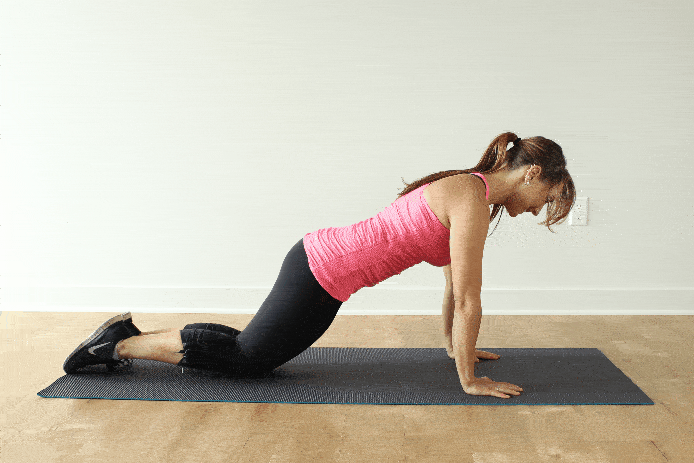
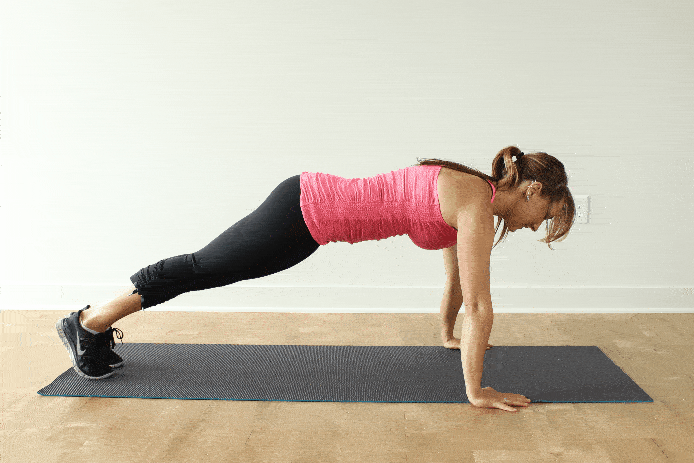
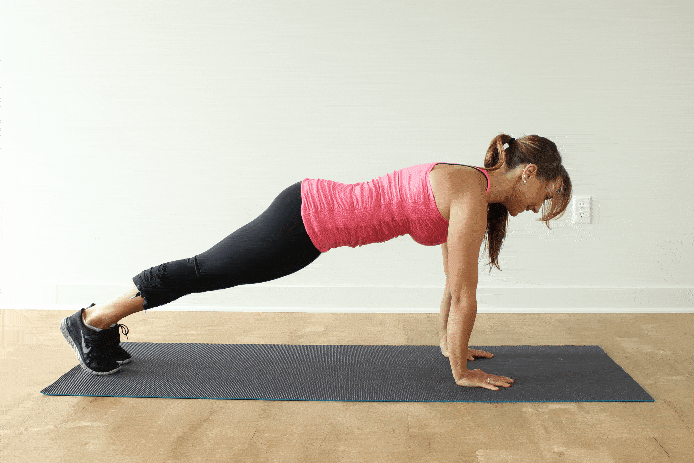
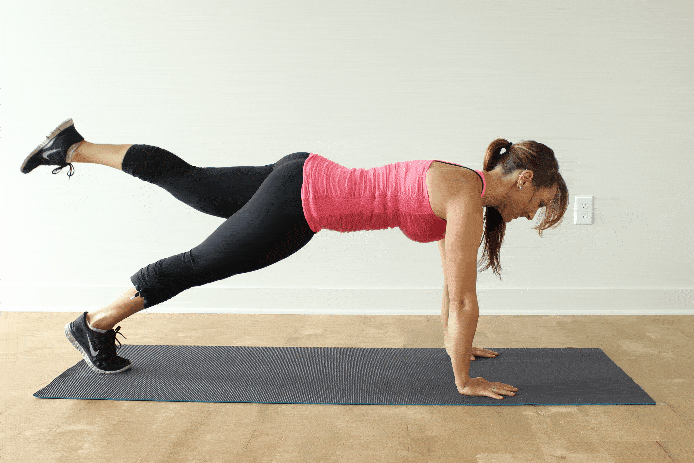

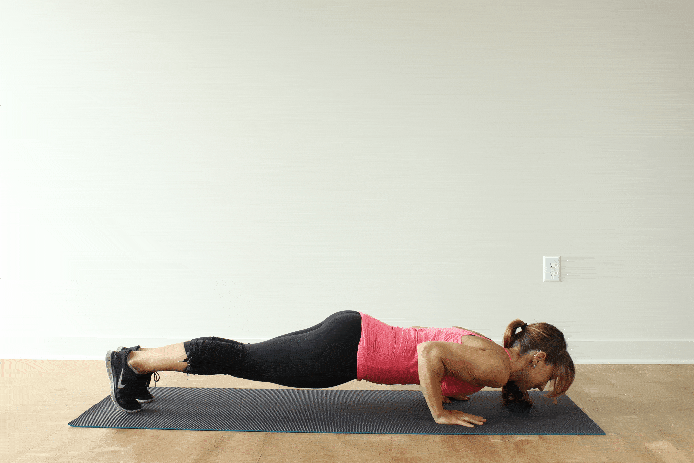
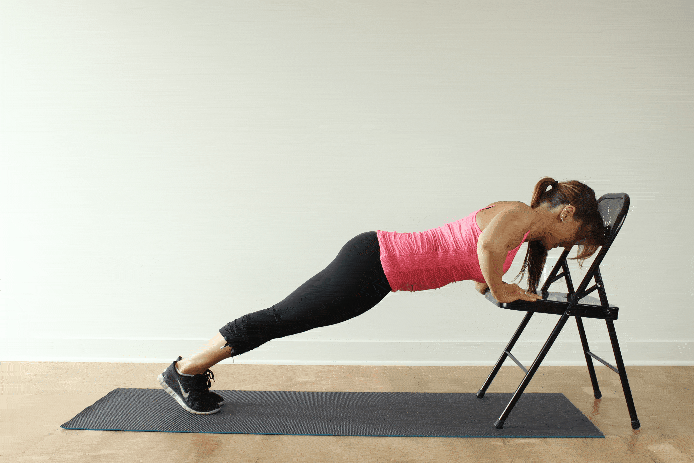

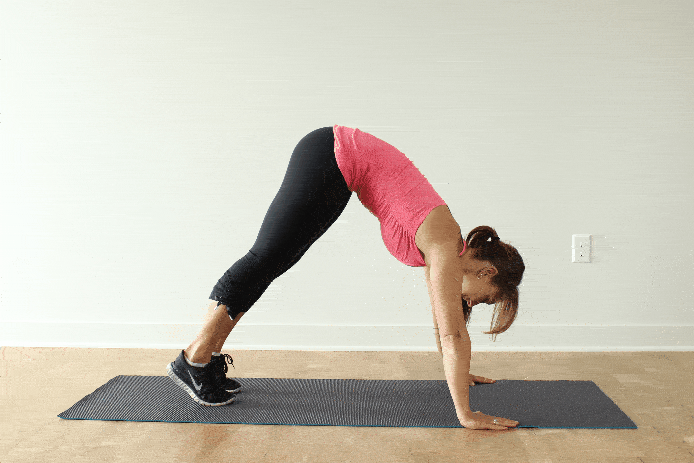
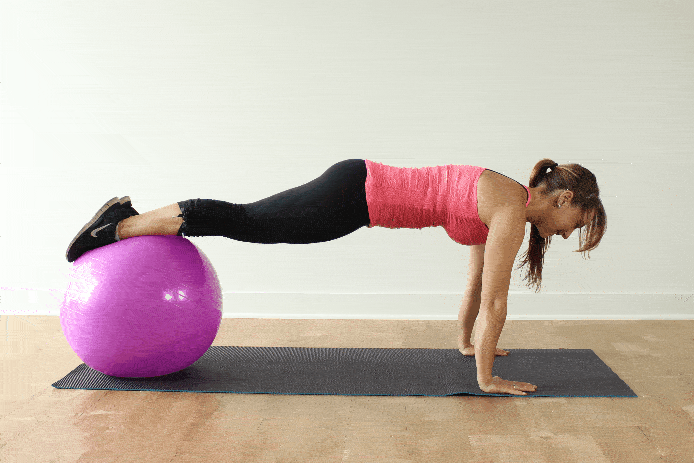

 Chicken Fajitas on Cilantro Lime Cauliflower Rice
Chicken Fajitas on Cilantro Lime Cauliflower Rice


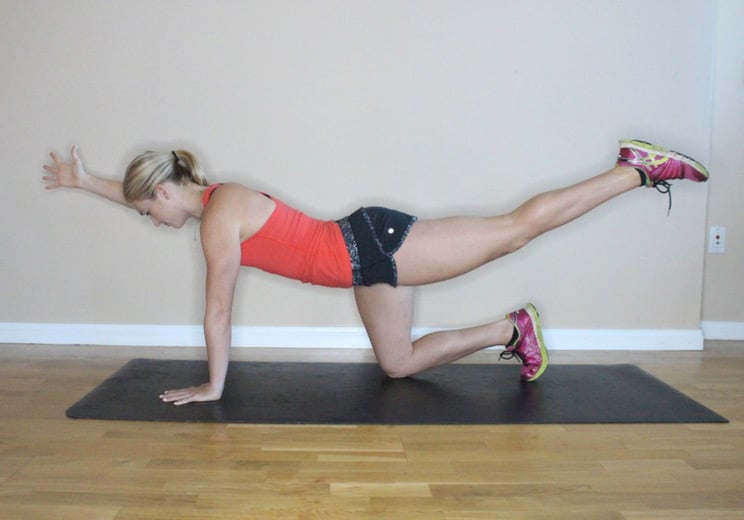






Show Comments